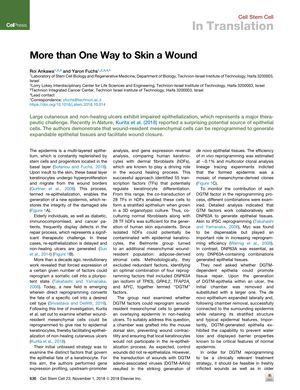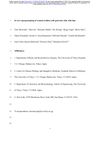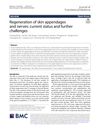More Than One Way to Skin a Wound: A Novel Regenerative Approach for Healing Non-Healing Cutaneous Ulcers
November 2018
in “
Cell Stem Cell
”

TLDR The research found a new way to heal chronic skin ulcers by turning certain cells into skin tissue using specific factors.
The study by Kurita et al. (2018) demonstrated a novel regenerative approach for healing non-healing cutaneous ulcers by reprogramming wound-resident mesenchymal cells into epithelial tissues using a combination of transcription factors (DNP63A, GRHL2, TFAP2A, and MYC, termed "DGTM"). In vivo experiments on mice showed that DGTM adeno-associated viruses could induce the formation of new epithelial tissues with a reprogramming efficiency of about 0.1%. DNP63A was crucial for the process, and MYC increased efficiency. The resulting epithelia could integrate with existing epidermis and maintain normal barrier functions. The method worked on both fresh and 7-day-old ulcers, and its efficacy was improved with a collagen gel and growth factors. The reprogrammed cells did not become malignant, indicating a safe potential for clinical use in skin repair.






